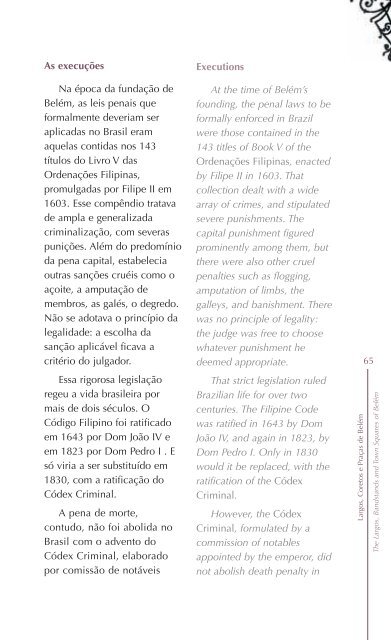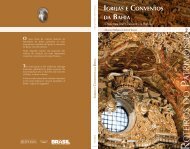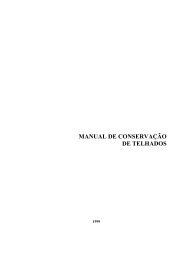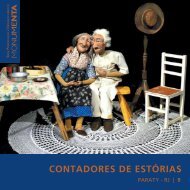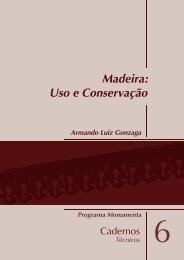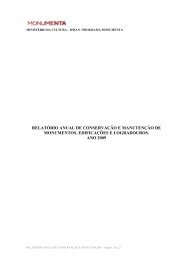LARGOS, CORETOS E PRAÇAS DE BELÉM - Monumenta
LARGOS, CORETOS E PRAÇAS DE BELÉM - Monumenta
LARGOS, CORETOS E PRAÇAS DE BELÉM - Monumenta
Create successful ePaper yourself
Turn your PDF publications into a flip-book with our unique Google optimized e-Paper software.
As execuções<br />
Na época da fundação de<br />
Belém, as leis penais que<br />
formalmente deveriam ser<br />
aplicadas no Brasil eram<br />
aquelas contidas nos 143<br />
títulos do Livro V das<br />
Ordenações Filipinas,<br />
promulgadas por Filipe II em<br />
1603. Esse compêndio tratava<br />
de ampla e generalizada<br />
criminalização, com severas<br />
punições. Além do predomínio<br />
da pena capital, estabelecia<br />
outras sanções cruéis como o<br />
açoite, a amputação de<br />
membros, as galés, o degredo.<br />
Não se adotava o princípio da<br />
legalidade:aescolha da<br />
sanção aplicável ficava a<br />
critério do julgador.<br />
Essa rigorosa legislação<br />
regeu a vida brasileira por<br />
mais de dois séculos. O<br />
Código Filipino foi ratificado<br />
em 1643 por Dom João IV e<br />
em 1823 por Dom Pedro I . E<br />
só viria a ser substituído em<br />
1830, com a ratificação do<br />
Códex Criminal.<br />
A pena de morte,<br />
contudo, não foi abolida no<br />
Brasil com o advento do<br />
Códex Criminal, elaborado<br />
por comissão de notáveis<br />
Executions<br />
At the time of Belém’s<br />
founding, the penal laws to be<br />
formally enforced in Brazil<br />
were those contained in the<br />
143 titles of Book V of the<br />
Ordenações Filipinas, enacted<br />
by Filipe II in 1603. That<br />
collection dealt with a wide<br />
array of crimes, and stipulated<br />
severe punishments. The<br />
capital punishment figured<br />
prominently among them, but<br />
there were also other cruel<br />
penalties such as flogging,<br />
amputation of limbs, the<br />
galleys, and banishment. There<br />
was no principle of legality:<br />
the judge was free to choose<br />
whatever punishment he<br />
deemed appropriate.<br />
That strict legislation ruled<br />
Brazilian life for over two<br />
centuries. The Filipine Code<br />
was ratified in 1643 by Dom<br />
João IV, and again in 1823, by<br />
Dom Pedro I. Only in 1830<br />
would it be replaced, with the<br />
ratification of the Códex<br />
Criminal.<br />
However, the Códex<br />
Criminal, formulated by a<br />
commission of notables<br />
appointed by the emperor, did<br />
not abolish death penalty in<br />
Largos, Coretos e Praças de Belém<br />
65<br />
The Largos, Bandstands and Town Squares of Belém


